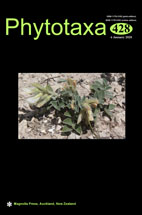Abstract
In order to establish the phylogenetic relationships and to resolve the natural classification of species in Dothideomycetes, it is necessary to use multi-gene phylogeny as well as morphology. Phaeodothis mori is a new species collected from dead leaves of Morus australis from Chiayi, Taiwan. Maximum parsimony, maximum likelihood and Bayesian analyses were performed based on multi-locus phylogenies of ITS, LSU, SSU and tef1-α to clarify the phylogenetic affinities of the species. Phaeodothis mori is distinguished from the other Phaeodothis species based on distinct size differences in ascomata, asci, ascospores and base pair differences in DNA sequence data. Remarkably, this is the first Phaeodothis species recorded from Morus australis. The new species was compared with the type species of Phaeodothis and a comprehensive description and micrographs were provided.

